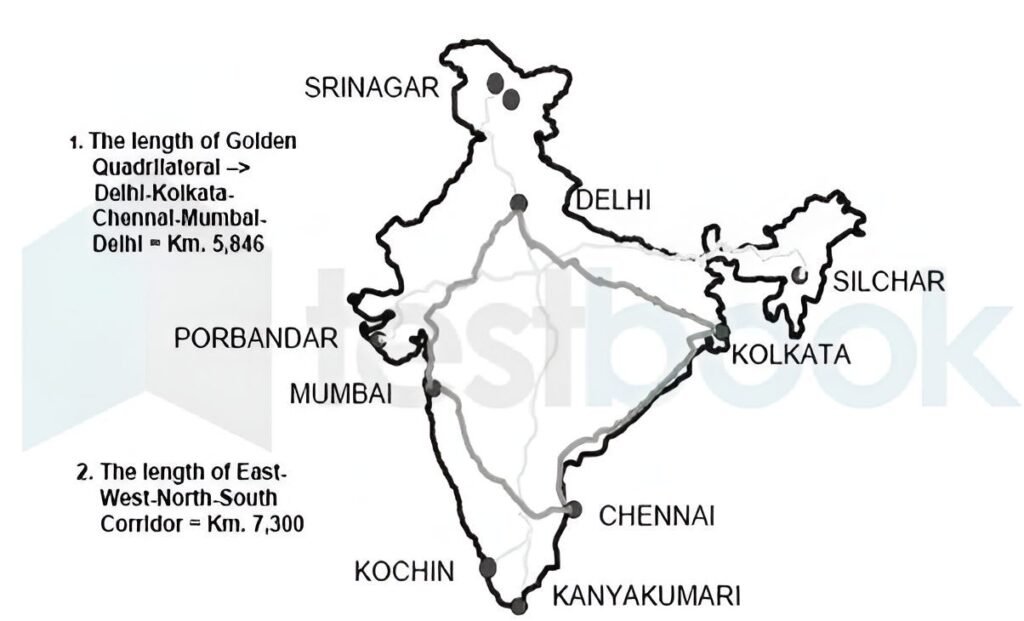India’s highway network is witnessing a massive transformation through two landmark projects, the Golden Quadrilateral and East-West-North-South Corridors. These ambitious initiatives form the backbone of the country’s national highway system, improving trade, logistics, and regional connectivity across India.
As part of the National Highways Development Project (NHDP), the Golden Quadrilateral links four major metros — Delhi, Kolkata, Chennai, and Mumbai — forming a closed loop that spans 5,846 kilometers. This project has significantly reduced travel time between major cities, boosted economic growth, and supported smoother movement of goods and passengers.
Golden Quadrilateral: The Economic Spine of India
The Golden Quadrilateral connects the most industrialized and populous regions of India. It links the northern, southern, eastern, and western parts of the country through high-quality highways. The route includes Delhi, Kolkata, Chennai, and Mumbai, creating an efficient transportation grid that connects key ports, production centers, and major markets.
Launched under the leadership of former Prime Minister Atal Bihari Vajpayee in 2001, the Golden Quadrilateral has become one of India’s most successful infrastructure projects. It not only connects major metros but also supports smaller towns along its path, driving regional development and investment opportunities.
East-West-North-South Corridor: Uniting Every Corner of India
Alongside the Golden Quadrilateral, the East-West-North-South Corridor is another key part of India’s highway expansion plan. This corridor measures around 7,300 kilometers, stretching from Silchar in Assam in the east to Porbandar in Gujarat in the west, and from Srinagar in Jammu and Kashmir to Kanyakumari in Tamil Nadu.
This corridor acts as India’s connective tissue, bridging remote regions and ensuring balanced growth. By linking the northeast to the western coast and the northernmost tip to the southern end, it promotes national integration and strengthens trade and tourism across the country.
India’s Future Expressway Plan
Building on the success of the Golden Quadrilateral and East-West-North-South Corridors, India is now planning to construct over 20,000 kilometers of expressways by 2030. This massive expansion, with an estimated investment of ₹20 trillion, aims to make road transport faster, safer, and more efficient.
These upcoming expressways will connect key industrial hubs, tourist destinations, and ports, further strengthening the logistics backbone of the nation.
FAQs
A: The total length of the Golden Quadrilateral is 5,846 kilometers, connecting Delhi, Kolkata, Chennai, and Mumbai.
A: The corridor spans 7,300 kilometers, linking Silchar to Porbandar and Srinagar to Kanyakumari.
A: It was launched in 2001 under the National Highways Development Project (NHDP).
A: India aims to build over 20,000 kilometers of new expressways by 2030, with an investment of around ₹20 trillion.
A: They improve connectivity, reduce travel time, boost trade, and promote balanced regional development.

